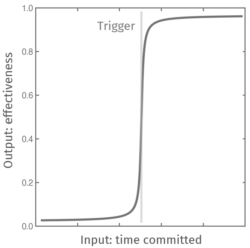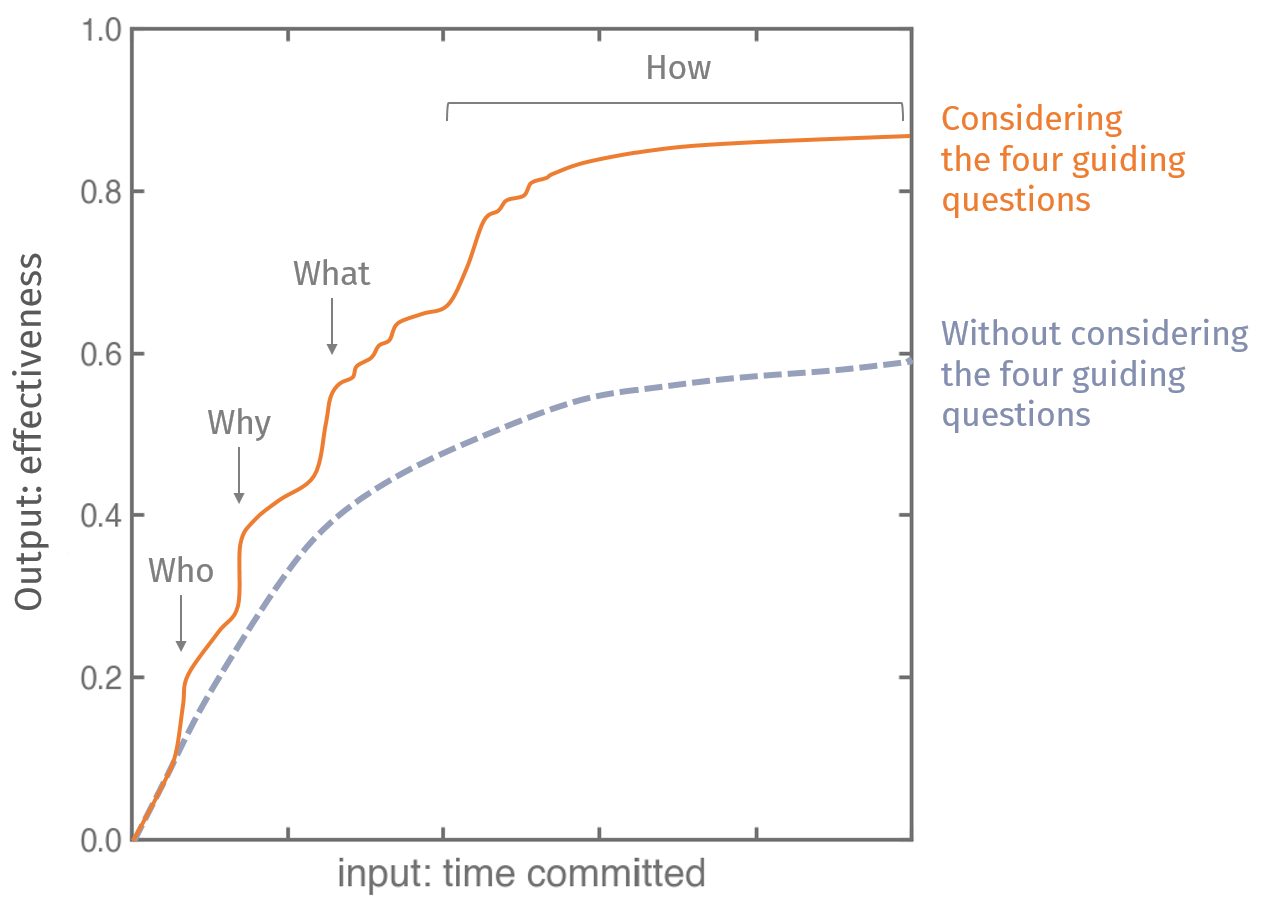 The concept of a threshold or trigger is common in engineering. Once a variable exceeds a particular value, another response variable changes rapidly. Signal strength as a function of applied voltage, semiconductor optical response as a function of photon energy… With experience, an experimentalist will know with confidence at which level of the independent variable, they will transition from un-operational to operational.
The concept of a threshold or trigger is common in engineering. Once a variable exceeds a particular value, another response variable changes rapidly. Signal strength as a function of applied voltage, semiconductor optical response as a function of photon energy… With experience, an experimentalist will know with confidence at which level of the independent variable, they will transition from un-operational to operational.
Communication operates under a different paradigm, one that is significantly more nuanced. If we consider time put toward the communication task on the x-axis (as a proxy for input effort) and effectiveness (utility to the audience) on the y-axis as output, it seems unlikely that there will be a time quantity that triggers effectiveness. For example, how much time do you need to put into designing a presentation to be sure that your audience will understand?
“Triggers” for effective communication
 I’ve now had over 100 opportunities to work with clients on their communication tasks, and while all time/effectiveness plots will vary by person and by project, I have noticed an interesting trend. This trend, which is admittedly qualitative, has the shape of a linear increase in effectiveness that includes four quasi-step functions. These rapid improvements (or “triggers”) correspond to my clients’ “aha” moments as we go over four simple but strategic questions.
I’ve now had over 100 opportunities to work with clients on their communication tasks, and while all time/effectiveness plots will vary by person and by project, I have noticed an interesting trend. This trend, which is admittedly qualitative, has the shape of a linear increase in effectiveness that includes four quasi-step functions. These rapid improvements (or “triggers”) correspond to my clients’ “aha” moments as we go over four simple but strategic questions.
- Trigger 1: Who? This question forces you to consider what your intended audience already knows and cares about. If you’re presenting to your thesis committee, skip the general background and give just the information they need to support you. If you’re giving a poster at Energy Night to a lot of non-experts, avoid technical deep-dives.
- Trigger 2: Why? This might seem obvious… so obvious that many don’t spend the time to deeply identify their objectives. “To share my work” isn’t enough; you’ll need to link your objective back to your intended audience. Are you looking for feedback? A collaboration? Funding? If this is a grad school application, then why grad school? Why this school? Why this program?
- Trigger 3: What? Identify the single most important message you want people to remember. This should be a single sentence that’s adapted to your target audience and specific objective(s). From there, you can answer a series of other “what” questions such as what to include or exclude in order to support that main message. For instance, what qualifications will you highlight in your fellowship application, or what figures will you include in your paper?
- Trigger 4: How? Organization, logical flow, color choices, use of headers, body language during a presentation, ways to improve your signal-to-noise ratio, etc. all fall under the “how” umbrella. However, make sure you answer the “who” and “why” questions first, then “what,” before spending too much time optimizing your work based on “how” questions.
Activating those triggers
Unlike the trigger paradigm from experiment, the jumps in the communication curve above occur not as a function of the x-axis (time committed) but as a result of the writer deliberately thinking through those guiding questions. This means that, if you’re up against a deadline, you can still produce a decent document or presentation by being strategic and using that time wisely. However, gauging the effectiveness of your own work is hard so the most reliable way to improve your work is by seeking feedback, preferably from someone close enough to your target audience.
But as I noted earlier, all time/effectiveness plots will vary by person and by project. In fact, there may even be some regions of negative slope during which you try out a design idea that actually makes your communication less effective. Some communication projects will also take more time and some will take less. All these variations are a normal part of the process.
Personally, I’ve always been driven by efficiency. Even as a Comm Fellow, as soon as I have a working version of a communication product, I am very tempted to call it “good enough” and move on to other tasks. This is a natural tendency that I have to actively fight against. And since there’s now time trigger after which a communication product is considered effective, what motivates me to move beyond my first draft is knowing that, by carefully considering the “who,” “why,” “what,” and “how” of my project, I will end up with a drastically improved product—and appreciate my own “aha” moments.
Julie Logan is a PhD graduate student in the Mesoscale Nuclear Materials group working under Prof. Mike Short. He is also an NSE Communication Fellow.
Published October 21, 2021
Related articles:
If you need help “triggering” more effective communication with the document or presentation you’re working on, schedule a time to speak with a Fellow.
